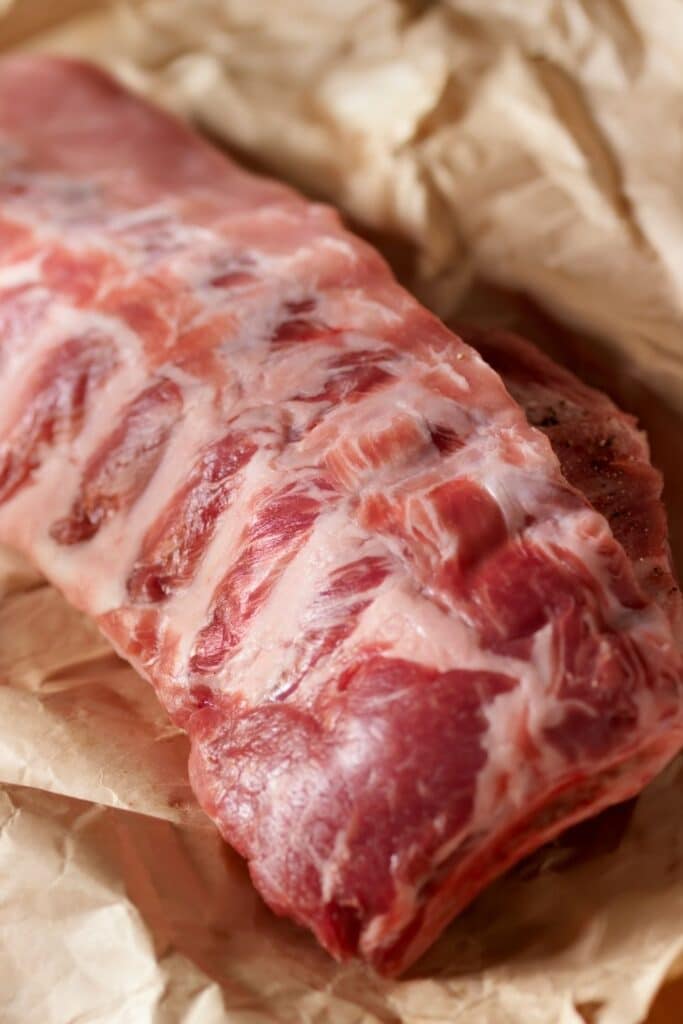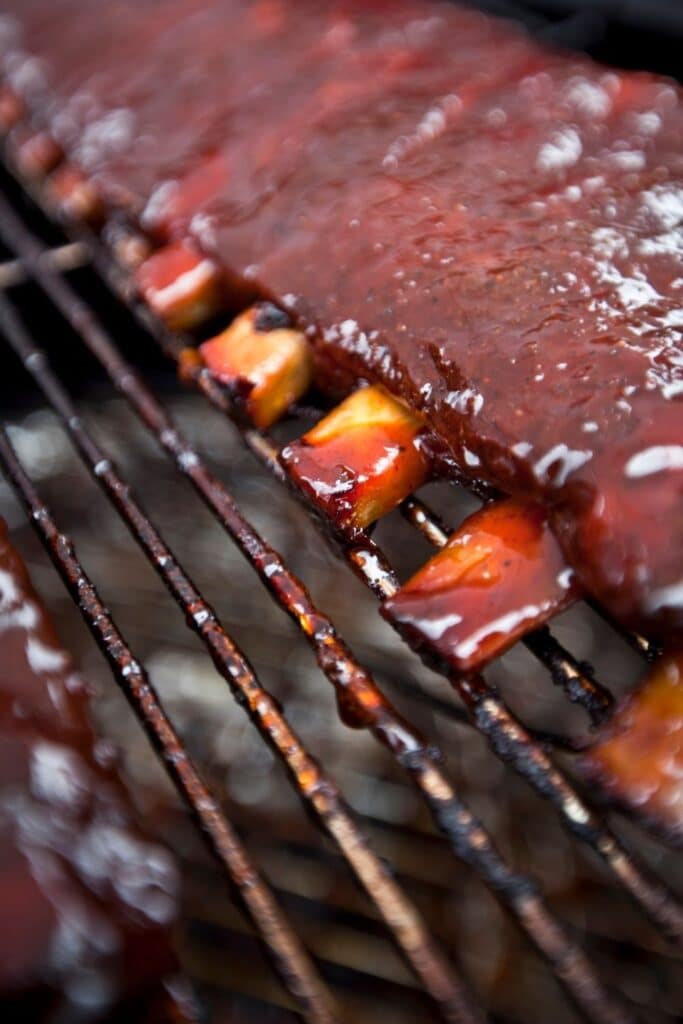
Ah, the allure of ribs. Whether it’s a backyard BBQ or a cozy dinner, ribs are always a hit. Ever wondered how to make the best ribs that leave everyone asking for more? We’ve got you covered. From Costco ribs to mouth-watering baby back ribs, this blog post is your ultimate guide to achieving rib nirvana.
When it comes to ribs, the first question is often: beef or pork? Beef ribs are known for their meatier texture and higher amount of fat, while pork ribs, such as baby back ribs, are leaner and quicker to cook. Both options have their merits, so it’s all about your personal preference.

Absolutely, let’s dive deeper into the beef vs. pork ribs debate to give you a more comprehensive understanding. 🍖
Absolutely, I’d be happy to put that scrumptious baby back ribs recipe on a recipe card for you! 🍖
Recipe Card: Oven-Baked Baby Back Ribs with Spicy-Sweet Rub
Ingredients:
Instructions:
Hope you find this recipe card helpful and easy to follow. Happy cooking! 😊

Beef ribs come from the cow’s rib section and are usually larger and meatier than their pork counterparts. They are known for their deep, rich flavor, thanks to a higher amount of fat marbling throughout the meat. This fat not only adds flavor but also keeps the meat moist during the cooking process.
When it comes to cooking beef ribs, slow cooking or smoking is often the best way to go. Given their thicker meat and higher fat content, they can withstand longer cooking times without drying out. A cooking time of at least 4-6 hours at a low temperature (around 225-275 degrees F) is often recommended.
Pork ribs are generally leaner and smaller than beef ribs, which means they cook faster. They are perfect for those who don’t want to spend all day by the grill or smoker.
Pork ribs are versatile when it comes to cooking methods. They can be grilled, smoked, or even cooked in an Instant Pot under high pressure for quicker results. The recommended internal temperature for cooked pork ribs is around 145 degrees F, and cooking time can vary from 1 to 3 hours depending on the method used and the type of pork rib.

There you have it—a deeper dive into the characteristics and cooking methods of beef and pork ribs. Whether you’re a fan of the rich, meaty flavor of beef ribs or the quick-cooking, leaner pork ribs, understanding these basics can make your next rib-cooking adventure a resounding success. 🍖👨🍳
Whether you’re a first-timer or a seasoned home chef, do not forget this crucial step. Use a paper towel to grip and remove the shiny membrane on the bone side of the rack of ribs. This small act makes a huge difference in the end result.
A good dry rub is your best friend when cooking ribs. Mix together different spices like black pepper, chili pepper, garlic powder, and onion powder. Feel free to experiment with cayenne pepper for some heat or brown sugar for sweetness. Wrap the seasoned ribs in plastic wrap and let them marinate for a few hours or overnight.

Slow-cooking ribs is a great way to ensure that the internal temperature is perfect. Wrap your ribs in heavy-duty aluminum foil and place them in a covered roasting pan. Cook at low heat (around 275 degrees F) for several hours. Halfway through the cooking time, you can baste them with apple cider vinegar for added moisture and tanginess.
Absolutely, let’s dive even deeper into the world of cooking techniques for costco ribs, focusing on the slow and low method. 🍖🔥
Slow cooking is one of the most traditional methods of cooking Costco ribs and it’s often favored for its ability to produce fall-off-the-bone tender meat. The slow and low approach is a surefire way to achieve the perfect internal temperature, which for pork ribs is around 145 degrees F and for beef ribs is around 190-203 degrees F. Here’s a more detailed look at the process:
It’s crucial to monitor the internal temperature to know when the ribs are done. Use a meat thermometer and insert it into the thickest part of the meat without touching the bone. Once it reaches the ideal internal temperature, you know your ribs are ready.
After slow cooking, some people like to finish their ribs on a grill for 5-10 minutes to get that nice, caramelized exterior. You can brush them with a bit more BBQ sauce before doing this for an extra layer of flavor.
So there you have it—a comprehensive guide to slow-cooking your ribs. This method is a testament to the idea that good things come to those who wait. The slow and low method might take time, but the result is nothing short of rib perfection. Happy cooking! 🍖👨🍳
Sous vide is a great option for those who like their ribs precisely cooked. Seal your seasoned ribs in a vacuum bag and cook them at a consistently low temperature in a water bath. After they reach the desired internal temperature, finish them on a high-heat grill for that beautiful crust.
While store-bought BBQ sauces are convenient, a homemade BBQ sauce allows you to control the flavors. Mix your favorite BBQ sauce base with ingredients like red bell pepper, safflower oil, and liquid smoke. Add salty flavors with a dash of soy sauce, or sweetness with some brown sugar.
Pour apple juice over your ribs during the cooking process for a touch of sweetness. For those who like a spicier kick, chili powder is an excellent addition. Balance out flavors with a dash of apple cider vinegar.
If you’ve managed to have any delicious ribs left over, store them in shallow airtight containers. This will preserve the flavor and texture for the next time you’re ready to indulge.
If you’ve stored your ribs well, reheating them should be a breeze. Place the ribs in a covered roasting pan and heat them in an oven preheated to 275 degrees F. Alternatively, you can use a pressure cooker on a medium heat setting for a quicker option.

Next time you find yourself at Costco, don’t hesitate to pick up Costco’s ribs. They offer a convenient and delicious option for any rib lover. From baby back to beef ribs, the world of ribs is your culinary oyster. Check out my short ribs here.
What are you waiting for? Put these rib-cooking tips to the test and dazzle your family and friends. Do you have a rib recipe or a savvy tip you swear by? Share it in the comments below! And hey, why not make ribs this weekend? After all, the only thing better than cooking ribs is eating them. Let’s get rib-tastic! Check out one of my favorite Pinterest pins here.
There you go! I hope this blog post hits all the right notes for you. Enjoy your journey to becoming a rib aficionado! 🍖👨🍳🎉